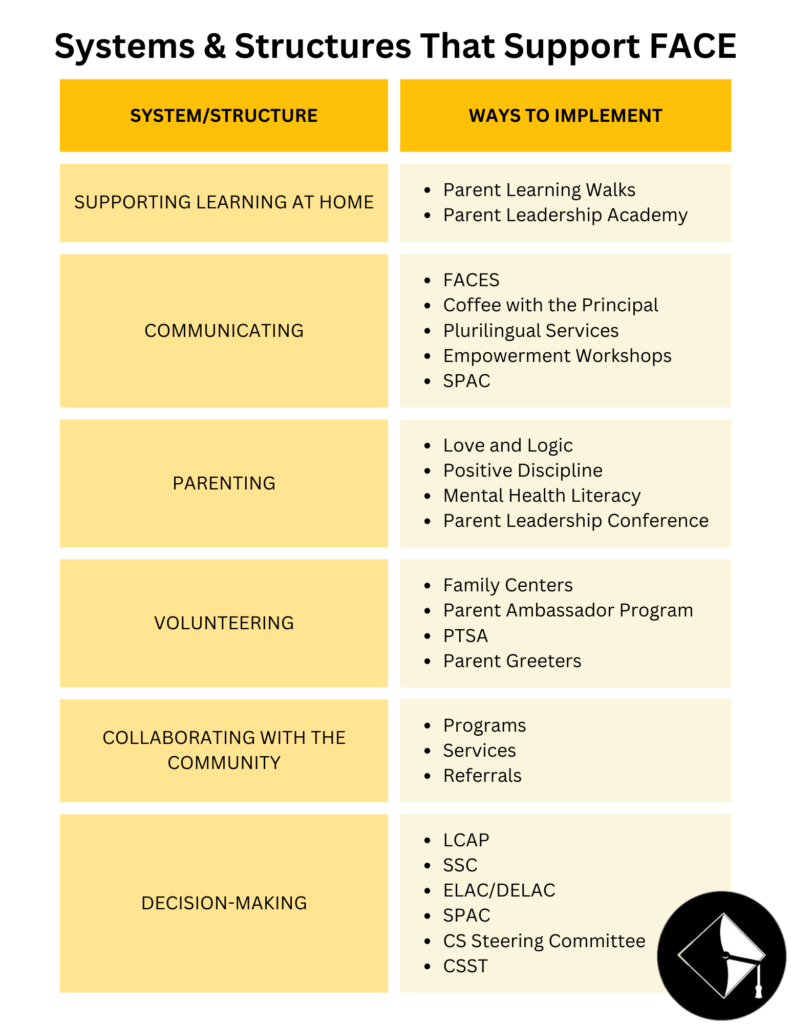
Family And Community Engagement (FACE): Evaluate Systems & Structures That Support School Communities
When schools, families, and community groups work together to support learning, children tend to do better in school, stay in school longer, and like school more.
– Southwest Educational Development Laboratory

INTRO
During a Crowdsource on March 16, 2023, Carlos Hernandez (Director of Community Schools, Family and Community Engagement at Anaheim Union School District) and Araceli Huerta (Community School Coordinator at Sycamore Junior High School) shared strategies for effectively engaging parents and family members. Topics of discussion included both site-level strategies to include families in your school community and district-level approaches to building systems that center family perspectives when making decisions.
OBJECTIVES
- Reflect on your school/district’s current structures & systems for family and community engagement
- Compare your school/district’s current status with those shared by AUHSD
- Brainstorm/begin planning how you can start moving your school/district toward more authentic family and community engagement
Activity
- Watch the brief Crowdsource clip and review AUHSD’s example Family And Community Engagement (FACE) Systems & Structures
- Reflect on your school’s current FACE Systems & Structures
- Brainstorm/begin planning how you can create more authentic connections with and supports for your greater school community

REFLECTION
- Reflect on your school/district’s current structures & systems for family and community engagement:
- What’s working well/well-implemented/established?
- What are areas of concern?
- Who in the community have you already partnered with? Who can you reach out to?
- What barriers do you foresee there being in expanding and strengthening your school’s/district’s F.A.C.E.?
- Use the AUHSD’s example systems & structures as a guideline to compare with your school/district:
- Which areas are robust?
- Which areas need more work/support?
- What accounts for the strengths, differences, gaps, etc?
TIPS
- Watch the video for more detailed explanations of the F.A.C.E. Systems & Structures presented by AUHSD
- While using examples for comparison can help you begin brainstorming, remember that each school and community is different and your plans need to account for what works for your school community











Responses